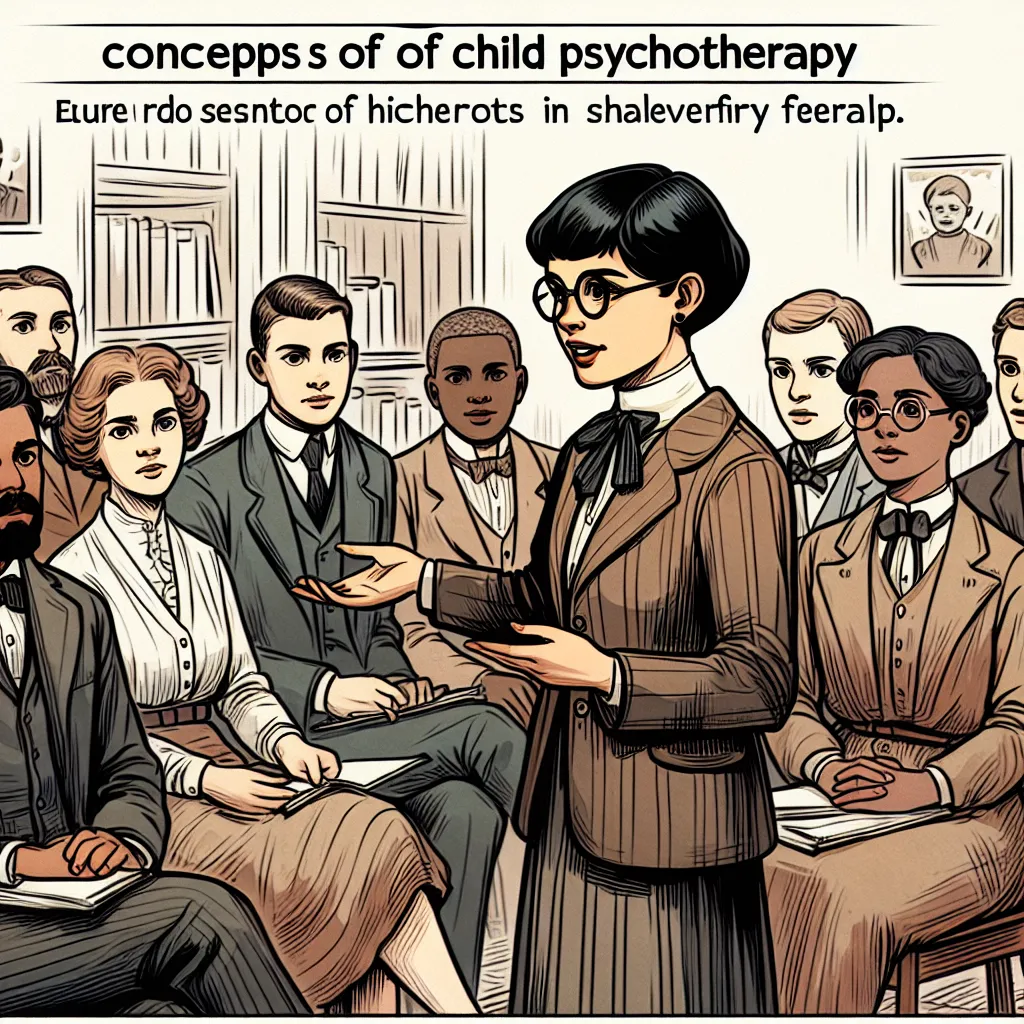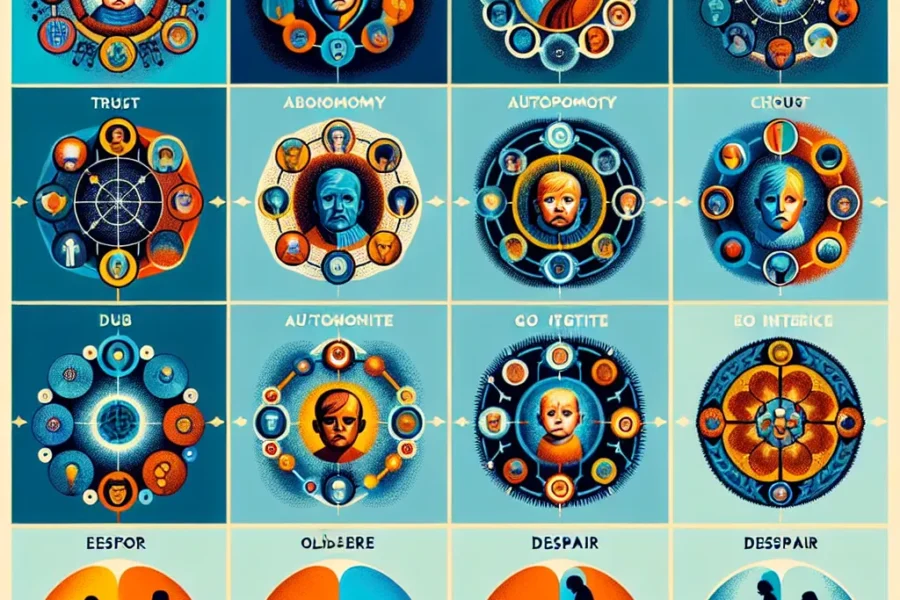Anna Freud, the daughter of the eminent psychoanalyst Sigmund Freud, was an influential figure in the development of child psychotherapy. Her work has significantly shaped our understanding of children’s psychological processes, and her pioneering techniques continue to impact therapeutic practices today. This article delves into Anna Freud’s role in shaping child psychotherapy and explores the lasting contributions she has made to the field.
Anna Freud’s Contributions to Child Psychotherapy
Born on December 3, 1895, in Vienna, Anna Freud was the youngest of Sigmund and Martha Freud’s six children. Growing up in a household steeped in the language of psychoanalysis, Anna was deeply influenced by her father’s groundbreaking work. However, she did not limit herself to his shadow; instead, she embarked on her own path and focused on the psychological analysis of children—a relatively uncharted area at that time.
Early in her career, Anna Freud became interested in how psychoanalytic principles could be applied to children. Her father’s theories were initially geared towards adults, but Anna saw the potential for adapting these concepts to understand and treat the emotional and psychological issues faced by younger patients. This laid the groundwork for what would eventually become the field of child psychotherapy.
One of Anna Freud’s major contributions was her clear delineation of the ways in which children’s symptoms differed from those of adults. She outlined that children often displayed their conflicts and anxieties through behaviors and fantasies rather than symptoms recognizable in adult psychology. Recognizing that children’s expressions of mental distress could be misinterpreted or overlooked, she placed a significant emphasis on observation and understanding of children’s play as a means to access their unconscious thoughts and feelings.
The Development of Defense Mechanisms
Anna Freud’s 1936 book, “The Ego and the Mechanisms of Defense,” introduced the concept of defense mechanisms and the important role they play in managing internal conflicts. While Sigmund Freud had touched upon the idea of defense mechanisms, it was Anna who elaborated them in considerable detail and applied them to the analysis of children.
Among these defenses, Anna Freud explored denial, projection, and identification — explaining how children use these strategies to cope with their emotional experiences. Her work made it possible for child psychotherapists to better understand the ways in which children guard themselves against psychological pain, and this understanding has been central to the development of therapeutic techniques that help children work through their defenses in a supportive environment.
Establishment of The Hampstead Child Therapy Course and Clinic
In the 1940s, Anna Freud’s teaching and research took on a more formal structure when she established the Hampstead Child Therapy Course and Clinic (now the Anna Freud National Centre for Children and Families) in London. This institution became a hub for clinical training and research in child psychotherapy, providing services to children and their families while also training the next generation of child psychotherapists.
Anna Freud’s clinic expanded on the traditional model of therapy, which focused on individual treatment, by introducing group settings and analyzing the interplay of dynamics within family systems. It also emphasized the importance of multidisciplinary approaches, incorporating insights from education, social work, and other fields to create a holistic understanding of each child’s circumstances.
Pioneering Play Therapy
Anna Freud’s observations led her to formalize the technique of play therapy. She realized that play was a child’s natural medium of communication and could be utilized therapeutically to help children express thoughts and feelings that might be too complex or difficult to articulate in words. With her endorsement, trained psychotherapists began to use play as a diagnostic and treatment tool, carefully interpreting the themes, patterns, and conflicts that arose in children’s play sessions.
Play therapy has since evolved into one of the cornerstone methods used in child psychotherapy around the world, known for its effectiveness in reaching children with a variety of cognitive and emotional challenges.
Innovations in Educational Settings
Alongside her clinical work, Anna Freud understood the importance of child development in the context of education. She was instrumental in advancing the concept of “educational therapy,” which integrates psychoanalytic principles within school settings. Through collaboration with teachers and educators, child psychotherapists following Freud’s approach are able to provide support to children within the educational environment, making therapy more accessible and less stigmatizing.
Advocacy for Child Welfare
Anna Freud’s passion went beyond the confines of therapy rooms and clinics; she was a fierce advocate for child welfare. She provided expert testimony during the overhauls of juvenile justice systems and engaged with policy initiatives to promote better mental health services for children. Her work has had a lasting impact on the legal and social services that protect children’s rights and welfare worldwide.
Legacy and Continuing Influence
Anna Freud’s role in shaping child psychotherapy cannot be overstated. She left a legacy that continues to guide clinical practices and influence how therapists, educators, and parents understand and relate to children. Her ideas and methods endure, helping countless children navigate the complexities of their inner worlds.
Her insistence on careful observation and attunement to the child’s perspective led to a more empathetic, patient, and open-minded stance in psychotherapy. The therapeutic techniques she endorsed emphasized the adaptability and resilience of children, enabling therapists to work with them collaboratively to foster healing and growth.
The Anna Freud National Centre for Children and Families carries on her mission, blending clinical practice, research, and training to advance the field of child psychotherapy. As an institution, it is a testament to her life’s work, serving as a beacon for professionals dedicated to improving the mental health of children across the globe.
Conclusion
Anna Freud’s contributions to child psychotherapy have been profound and lasting. Her work changed how the world understands and treats the youngest members of society. From elucidating defense mechanisms to advocating for changes in education and child welfare, Anna Freud’s influence is deeply embedded in the fabric of contemporary psychotherapy.
As mental health professionals continue to build upon her groundbreaking practices, Anna Freud’s legacy will endure, and her role as a pioneer in child psychotherapy will always be remembered. Her compassionate and comprehensive approach to therapy provides a model for practitioners aiming to understand and help children in a world that is constantly evolving, ensuring that her impact on the field will continue to be felt for generations to come.



Leave a Comment